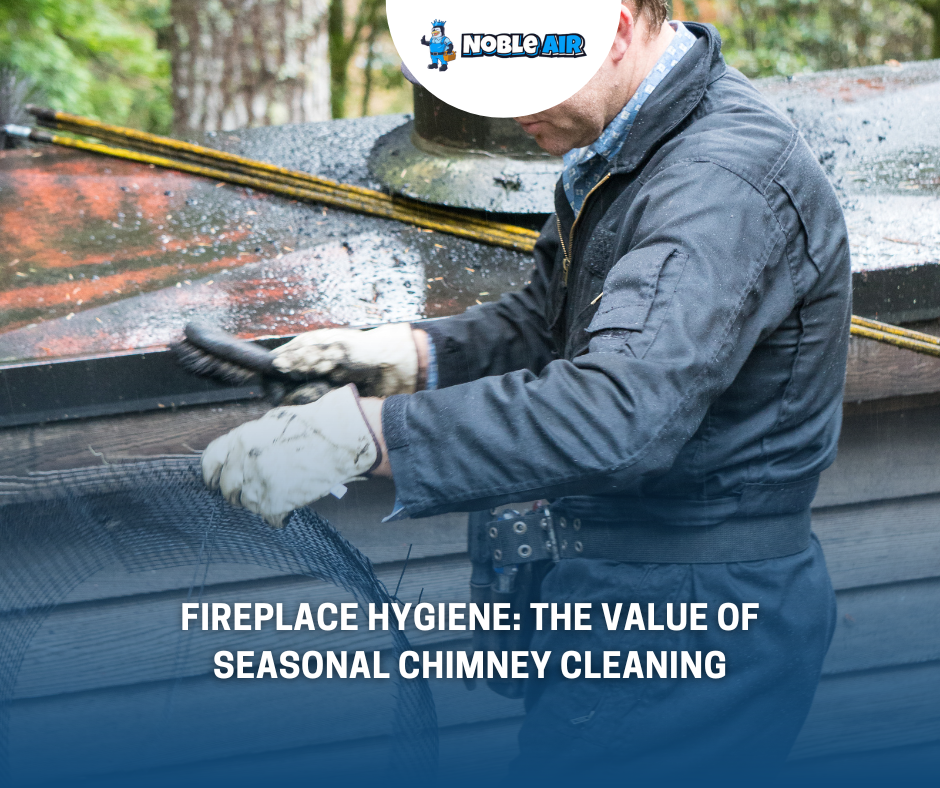The soothing warmth of a crackling fireplace has long been synonymous with the comforts of home. However, this cozy image can be tarnished if proper hygiene measures are not observed in maintaining fireplaces and their chimneys. The neglect of these structures poses a considerable risk, making them potential hazards within the household. This includes the accumulation of soot and creosote, substances that could lead to dangerous chimney fires or blockages resulting in carbon monoxide infiltration into homes.
Therefore, understanding how to maintain fireplace hygiene through seasonal chimney cleaning becomes an invaluable tool for ensuring safety.
A well-maintained hearth not only enhances the aesthetic appeal of a home but also contributes significantly to its overall safety standards. The process involved is more than merely sweeping away visible debris; it requires adherence to meticulous steps geared towards effective hearth maintenance. This article will delve into these critical procedures while shedding light on why they hold such great importance in maintaining a sanitized and safe environment for families across households.
Being part of this community means acknowledging shared responsibilities for health and safety – one key aspect being regular chimney cleaning, which underscores its value beyond mere aesthetics or tradition.
Risks Associated with Neglected Fireplaces
Neglected fireplaces pose significant risks, including the potential for house fires and carbon monoxide poisoning, due to accumulated soot, creosote build-up, and inadequate ventilation.
The combustion process that occurs while burning wood or coal in a fireplace results in by-products such as soot and creosote. These substances tend to accumulate on the inner walls of chimneys over time. This accumulation, if not removed regularly, can become a combustible material which poses a high risk of causing chimney fires that can quickly spread to other parts of the house.
Additionally, blocked or poorly ventilated chimneys may cause harmful gases like carbon monoxide to leak into living spaces instead of being properly vented outside.
Moreover, neglecting regular inspections and cleaning procedures can also lead to structural damage in chimneys. Water leakage is common in neglected chimneys which can result in costly repairs and potential safety hazards. A deteriorating chimney structure may allow water intrusion into the home leading to mildew growth or even structural damage from rotting woodwork.
Henceforth, it becomes paramount that homeowners understand the importance of seasonal chimney cleaning for preserving not only their property value but also ensuring the health and well-being of their loved ones residing within these structures.
Steps for Effective Hearth Maintenance
Ensuring the hearth’s optimal performance necessitates regular maintenance, as the old adage goes ‘A stitch in time saves nine’, underscoring the importance of preventative measures over repairs.
This applies particularly to fireplace and chimney upkeep; for instance, annual inspections are recommended by the National Fire Protection Association to identify creosote buildup or other potential hazards that might impede functionality or pose a safety risk.
Moreover, such examinations can detect minor issues before they progress into significant problems that require costly repairs.
Professional chimney sweeps have specialized tools and training to remove creosote effectively and safely, preventing chimney fires caused by this highly combustible substance.
Furthermore, effective hearth maintenance also includes tasks homeowners can undertake between professional cleanings.
Regularly removing ashes from the firebox ensures efficient airflow for combustion and reduces corrosive damage to metal components.
Careful monitoring of smoke output can indicate whether adjustments are needed in fuel type or quantity burned, thus optimizing heat production while minimizing pollutant emissions.
The use of seasoned hardwood as fuel not only results in cleaner burns but also extends the longevity of your fireplace system through reduced residue accumulation on internal surfaces.
In conclusion, adopting these steps for thorough hearth maintenance contributes significantly towards extending its lifespan, enhancing safety standards, and promoting a sense of wellbeing within one’s home environment.
READ MORE:
Sweeping Away Risks: The Necessity of Regular Chimney Cleaning

